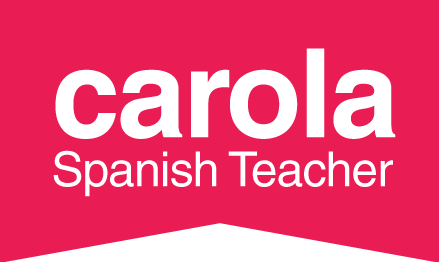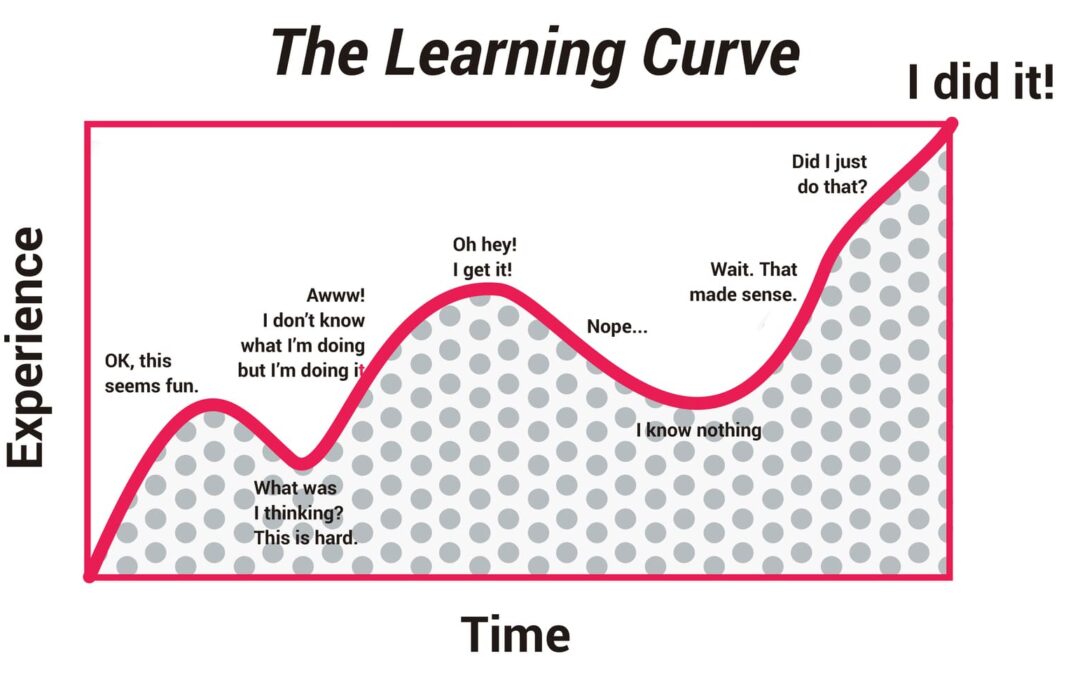Learning Spanish (or any language!) isn’t like climbing a ladder—step by step, no turning back. It’s more like a winding mountain path with views, storms, surprises…. You move forward, stumble, rest, and grow.
And that’s where the learning curve comes in 🔄.
Today, I want to walk you through this powerful concept that can bring more patience, motivation, and understanding to your Spanish journey 💬
🤔 What is the Learning Curve?
The learning curve is a model that shows how we improve over time when learning something new—like Spanish!
It’s not a straight shot to fluency. Instead, it’s a journey that includes both leaps of progress and slow, challenging climbs.
Why is this important?
Because knowing what to expect helps you stay motivated. It reminds you that ups and downs are normal, and each stage is part of the bigger picture 🎨.
🌀 The 4 Stages of the Learning Curve
1️ Unconscious Incompetence
«I know nothing… but I don’t even realize it!»
At this stage, you’re blissfully unaware of how complex the language really is. Maybe you downloaded Duolingo, learned “hola” and “gracias,” “ ¿Cómo estás?” and thought, “I’ve got this!” 😄
You make a ton of mistakes—but you’re excited, curious, and fearless. This is a magical moment of discovery.
💡 Tip:
Enjoy this honeymoon phase. Play with the language like a child plays with new toys. Don’t worry about perfection—just have fun, be brave, and say everything, even if it’s wrong.
2️ Conscious Incompetence 😵
«Oh no. Spanish is harder than I thought.»
Reality sets in. Suddenly, Spanish verbs seem to have a million forms, articles have genders, and native speakers talk at 1000 km/h. You’re aware of how much you don’t know, and that can be overwhelming.
But this is progress. Awareness is the beginning of growth 🌱.
💡 Tip:
This stage is where many learners want to quit. Don’t! You’re laying the foundation. Embrace confusion—it means your brain is starting to organize what used to be invisible.
Focus on small wins: a sentence you understood, a new word remembered, or a conversation you dared to start. It all adds up.
3️ Conscious Competence 🧩
«I can do this… but I have to think about it.»
You’re speaking Spanish! You can hold conversations, understand key ideas, and write simple texts. But it takes effort and concentration. You’re still translating in your head, and sometimes it feels slow or awkward.
Think of it like learning to drive: you’re doing it, but you’re checking every mirror and gripping the wheel tightly 🚗.
💡 Tip:
Keep showing up daily. Practice speaking (even to yourself), listen to podcasts, write in a journal, and celebrate every little improvement. You’re in a sweet spot now—momentum is building.
4️ Unconscious Competence 😎
«Wait… I just spoke Spanish without thinking!»
This is the dream stage. Spanish flows effortlessly. You’re not perfect (no one is), but the language feels natural. You think in Spanish, your personality shows, and you even can notice when others make mistakes 😏.
It’s not the end—learning a language is never truly finished. But it’s a place of confidence and freedom.
💡 Tip:
Keep expanding! Watch Spanish films without subtitles, read novels, explore regional accents, learn idioms, and immerse yourself. Now that the basics are automatic, you can enjoy the deeper layers of the language and culture 🌍❤️.
🧘♀️ The Secret Sauce: Patience + Consistency
“How long will it take me to become fluent?”
I get this question all the time. And here’s the truth:
It depends. Not just on your time, but on your attitude, your routines, your environment, and your mindset 🧠.
Language learning is not a race. It’s a habit.
You don’t have to sprint every day—you just have to keep walking 🐢➡️🚀.
Even if you study just 15 minutes a day, you’ll make steady progress. And that’s powerful.
🎾 What If you play paddle? Here’s the connection
If you play paddle, this might sound familiar:
You know how, at first, it feels like you’re just hitting balls and having fun—even if you don’t really know the rules? Then suddenly, you realize how much positioning, timing, and tactics matter—and it gets a bit frustrating? That’s the learning curve.
Learning Spanish works the same way. At first, you’re excited, saying “hola” and “gracias” and thinking, this is easy!
Then comes the hard part—verb conjugations, fast conversations, and grammar rules.
But just like in paddel, if you keep showing up, stay consistent, and learn from each game (or each conversation), you’ll start moving more naturally.
One day, you’ll realize you’re speaking Spanish without overthinking it—just like when you nail a rally without even noticing your footwork. T
Trust the process—it’s the same court, just a different game 😉.
¡Vamos! 💪 ¡Tú puedes! 🇪🇸🌟

